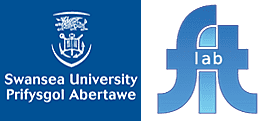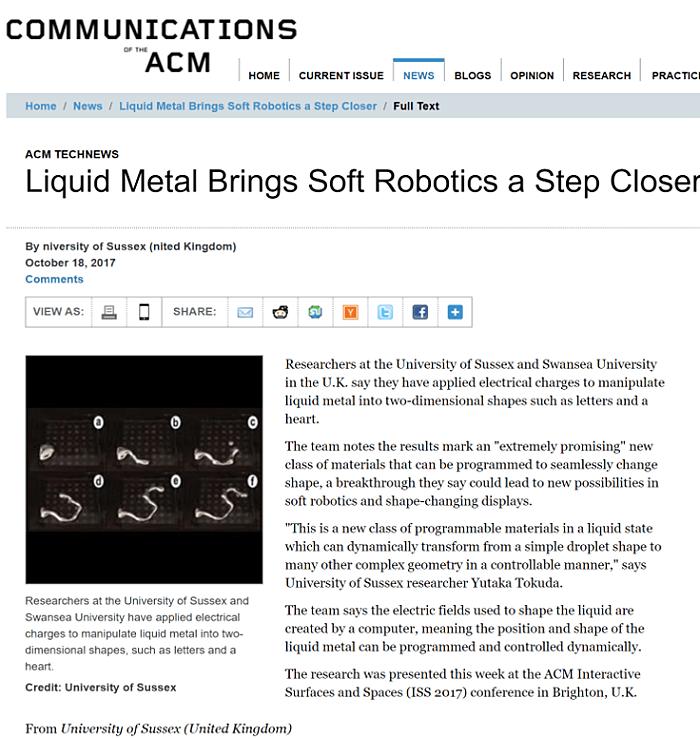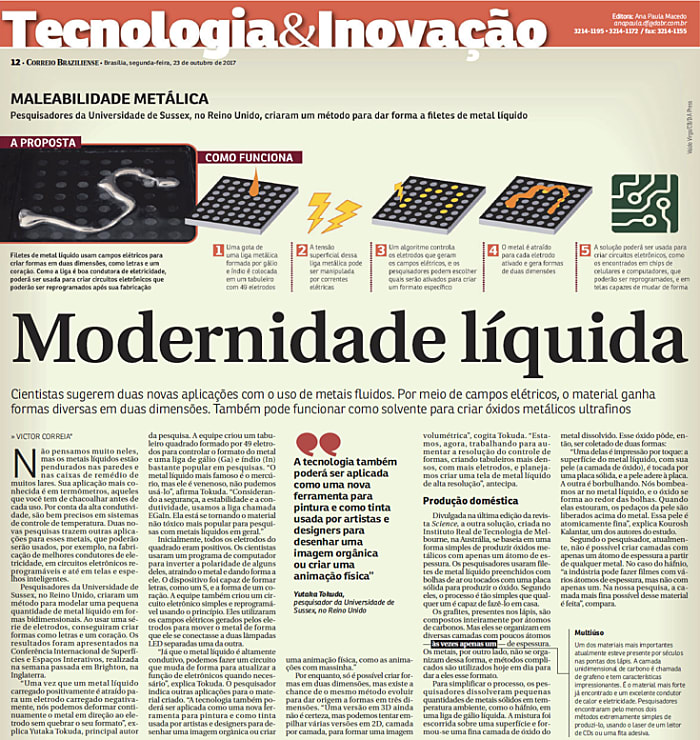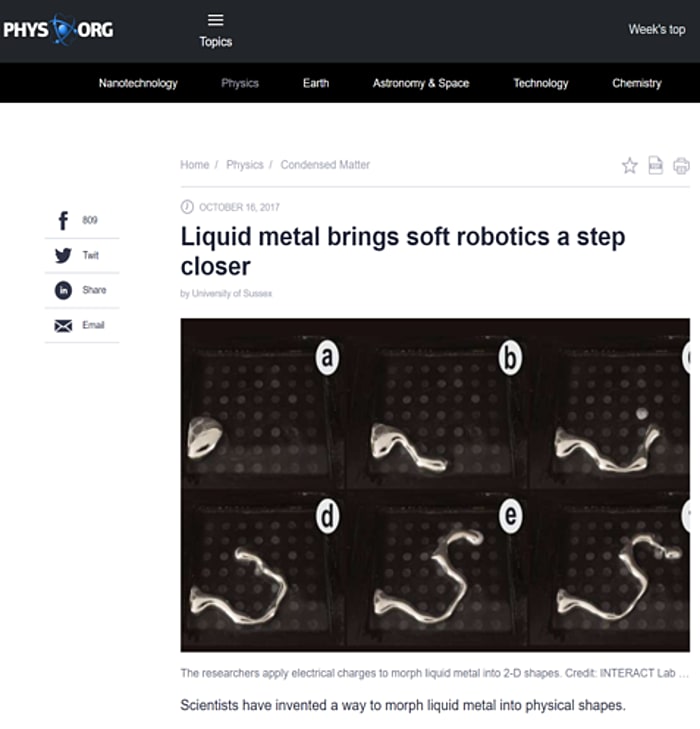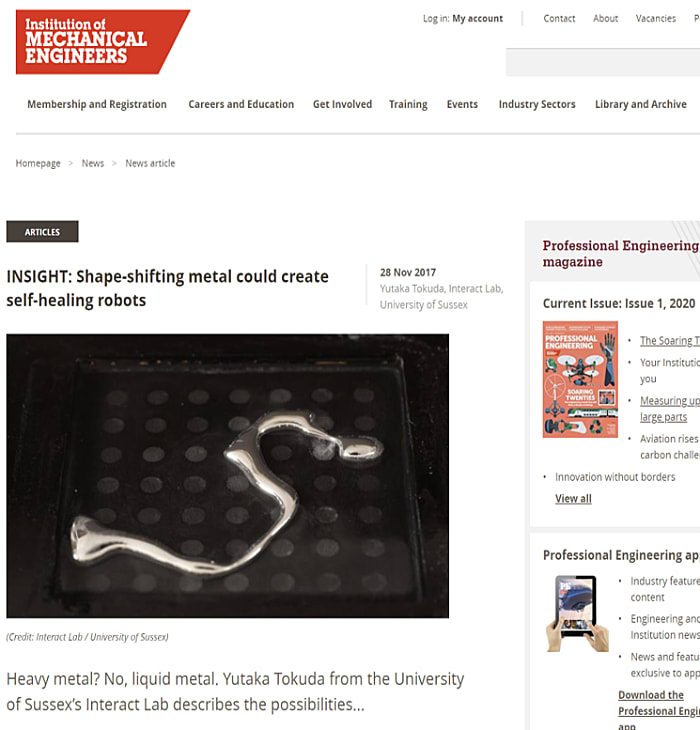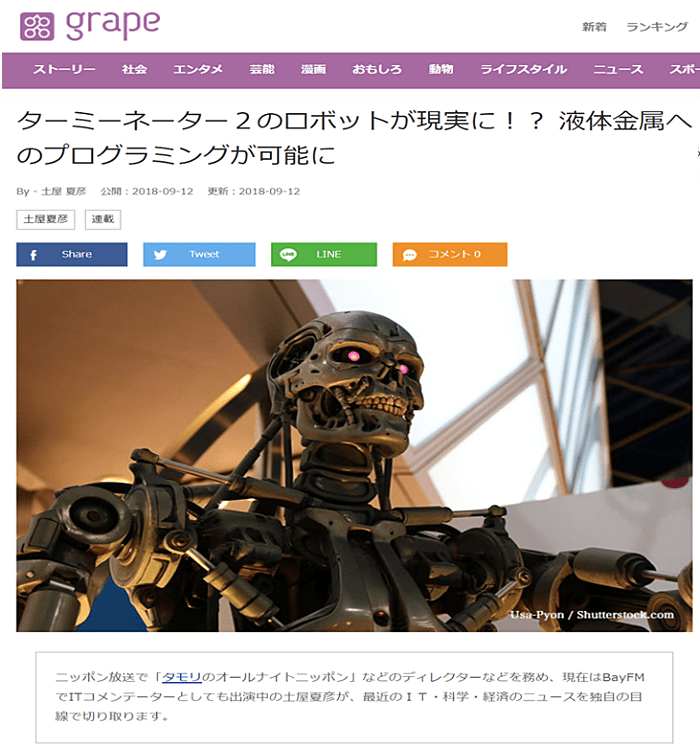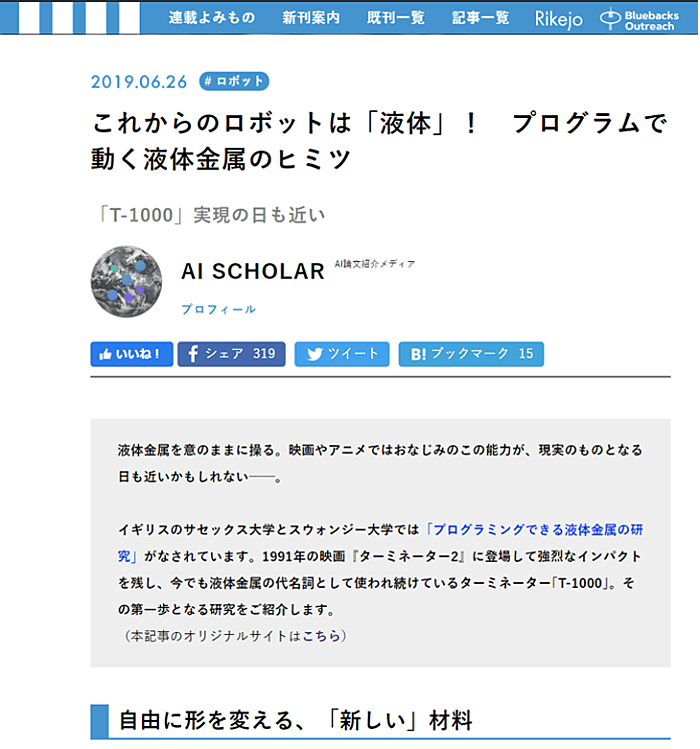Programmable Liquid Matter
Electrically Controllable Shape Deformation of Gallium-Indium Alloy Liquid Metal
Overview
This project investigated a novel control method to program the shape of a liquid metal and allow unique organic animations based on spatio-temporally controlled electric fields. In particular, we successfully manipulated a droplet of liquid metal (Gallium Indium eutectic alloy) by a 7x7 electrode array prototype system, featuring an integrated image tracking system and a simple GUI. Exploiting the strong dependance of EGaIn’s surface tension on external electric voltages, multiple electrodes are dynamically controlled to manipulate the liquid metal into a fine-grained desired shape. Taking advantage of the high conductivity of liquid metals, a shape-changing, reconfigurable smart circuit can be considered as one of unique applications of the proposed method. We explored system constraints and the overarching challenge of controlling liquid metals in the presence of phenomena such as splitting, self-electrode interference and finger instabilities. Through this project, we aimed to open the new possibility of liquid based programmable matter for soft robotics, physically reconfigurable electronic devices, and new media art display.
Working Principle


System Demonstration
Drawing the letter "S"
Drawing a symmetric heart shape
Reconfigurable LED circuit
Main Video
Publications
Paper Yutaka Tokuda, Jose Luis Berna Moya, Gianluca Memoli, Timothy Neate, Deepak Ranjan Sahoo, Simon Robinson, Jennifer Pearson, Matt Jones, Sriram Subramanian. 2017. Programmable Liquid Matter: 2D Shape Deformation of Highly Conductive Liquid Metals in a Dynamic Electric Field. In Proceedings of the 2017 ACM International Conference on Interactive Surfaces and Spaces (ISS'17), pp.142--150. https://doi.org/10.1145/3132272.3134132 PDF Talk Slide[74MB]
Demo Yutaka Tokuda, Jose Luis Berna Moya, Gianluca Memoli, Timothy Neate, Deepak Ranjan Sahoo, Simon Robinson, Jennifer Pearson, Matt Jones, Sriram Subramanian. 2017. Programmable Liquid Matter: 2D Shape Drawing of Highly Conductive Liquid Metals in a Dynamic Electric Field. In Proceedings of the 2017 ACM International Conference on Interactive Surfaces and Spaces (ISS'17), pp.454--457. https://doi.org/10.1145/3132272.3132289 PDF

